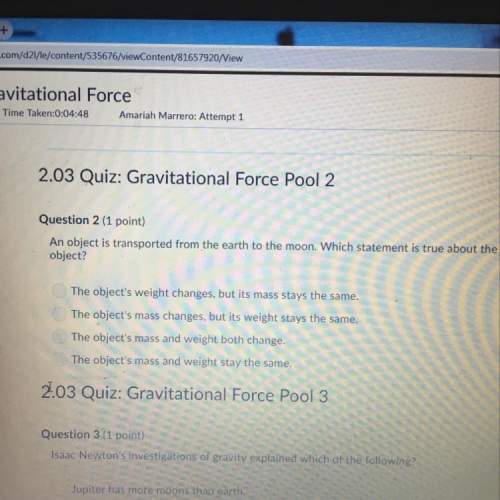
Chemistry, 28.11.2020 09:40 zibnmustafah
Can someone please help me with this?-- 20 pts!
Oxygen has six valence electrons, and an electronegativity of 3.44. Calcium has two valence electrons and an electronegativity of 1.00.
How can the octet rule be used to explain the bonding between them?
Oxygen needs access to two electrons to reach a full octet. Each calcium atom has two valence electrons that it prefers to lose to obtain a full octet. Therefore, one oxygen atom and one calcium atom complement each other and form an ionic bond.
Oxygen needs access to two electrons to reach a full octet. Each calcium atom has two valence electrons that it prefers to lose to obtain a full octet. Therefore, one oxygen atom and one calcium atom complement each other and form a covalent bond.
Oxygen needs to lose six electrons to reach a full octet. Each calcium atom needs access to six electrons to achieve a full octet. One oxygen atom donates all its electrons to calcium, forming an ionic bond.
Oxygen needs to lose six electrons to reach a full octet. Each calcium atom needs access to six electrons to achieve a full octet. One oxygen atom donates all its electrons to calcium, forming a covalent bond.

Answers: 3


Another question on Chemistry

Chemistry, 22.06.2019 12:00
Solutions of sodium carbonate and silver nitrate react to form solid silver carbonate and a solution of sodium nitrate. a solution containing 3.50 g of sodium carbonate is mixed with one containing 5.00 g of silver nitrate. how many grams of sodium carbonate, silver nitrate, silver carbonate, and sodium nitrate are present after the reaction is complete?
Answers: 2

Chemistry, 22.06.2019 18:00
An object displaces 652 ml of water. the volume of the object is: 0.652 cm³ 6.52 cm³ 65.2 cm³ 652 cm³
Answers: 2

Chemistry, 22.06.2019 21:20
Phosgene (carbonyl chloride), cocl2, is an extremely toxic gas that is used in manufacturing certain dyes and plastics. phosgene can be produced by reacting carbon monoxide and chlorine gas at high temperatures: co(g) cl2(g)⇌cocl2(g) carbon monoxide and chlorine gas are allowed to react in a sealed vessel at 477 ∘c . at equilibrium, the concentrations were measured and the following results obtained: gas partial pressure (atm) co 0.830 cl2 1.30 cocl2 0.220 what is the equilibrium constant, kp, of this reaction
Answers: 2

Chemistry, 22.06.2019 23:30
The density of benzene at 15 °c is 0.8787 g/ml. calculate the mass of 0.1500 l of benzene at this temperature. enter your answer in terms of grams
Answers: 2
You know the right answer?
Can someone please help me with this?-- 20 pts!
Oxygen has six valence electrons, and an electroneg...
Questions



Mathematics, 26.10.2019 16:43








Social Studies, 26.10.2019 16:43

History, 26.10.2019 16:43

Biology, 26.10.2019 16:43

English, 26.10.2019 16:43


Mathematics, 26.10.2019 16:43


Chemistry, 26.10.2019 16:43

English, 26.10.2019 16:43




